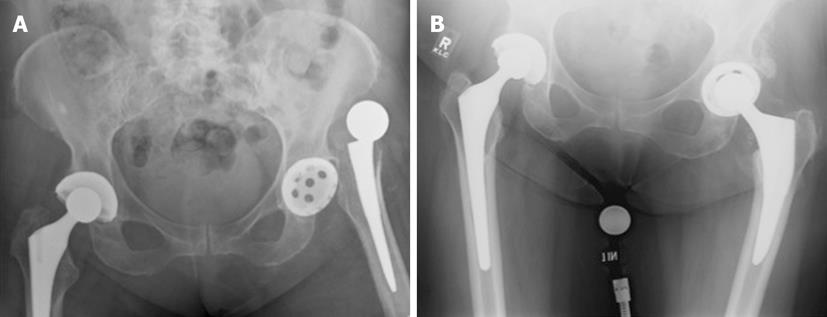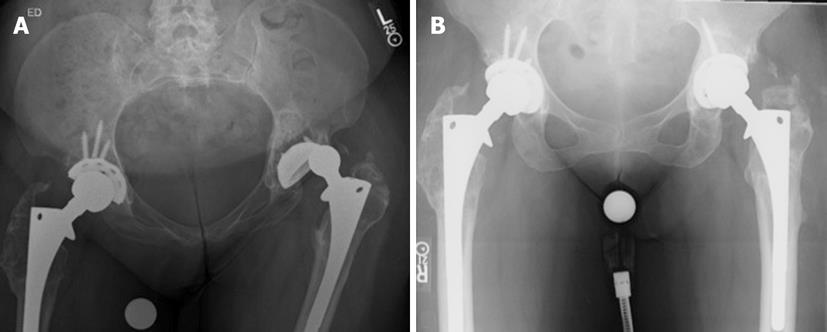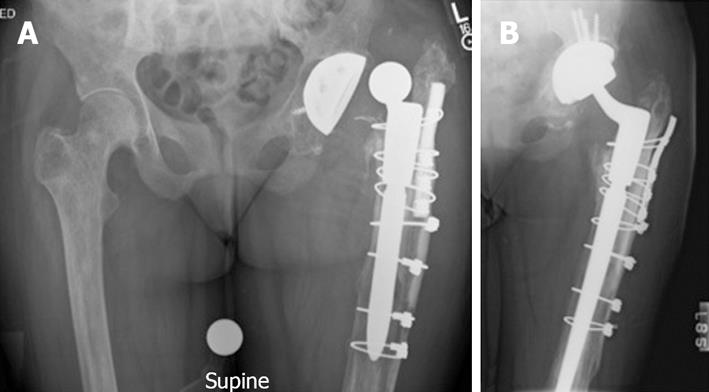Copyright
©2012 Baishideng.
World J Orthop. Aug 18, 2012; 3(8): 122-130
Published online Aug 18, 2012. doi: 10.5312/wjo.v3.i8.122
Published online Aug 18, 2012. doi: 10.5312/wjo.v3.i8.122
Figure 1 Anteroposterior pelvis radiograph of a 72-year-old female who sustained an anterior-superior dislocation of her left total hip arthroplasty approximately 1 mo after the index procedure (A) and the hip was reduced closed and found to be stable (B).
Note the excessive anteversion of the acetabular component which is the likely etiology of the anterior dislocation.
Figure 2 Anteroposterior pelvis radiograph of a 52-year-old female who is status post left total hip arthroplasty with subsequent revision of the femoral component for hardware loosening and instability.
A: She sustained a prosthetic hip dislocation during physical therapy that was unable to be reduced by closed means. At the time of open reduction, revision total hip arthroplasty was indicated to correct the risk factors for instability; B: This included revision of the retroverted acetabular cup, revision of the malpositioned revision femoral stem, and increasing the femoral head size. The patient has not experienced any recurrent episodes of instability.
Figure 3 Anteroposterior pelvis radiograph of a 45-year-old female who is status post bilateral total hip arthroplasties, each of which had been revised once for osteolysis.
A: She presented with recurrent dislocations of her left total hip arthroplasty and having failed conservative management; B: the patient underwent a second revision of her left total hip arthroplasty with acetabular component exchange and exchange to a large femoral head. Intraoperatively, her stem was found to be relatively neutral, which likely contributed to her posterior instability.
- Citation: Werner BC, Brown TE. Instability after total hip arthroplasty. World J Orthop 2012; 3(8): 122-130
- URL: https://www.wjgnet.com/2218-5836/full/v3/i8/122.htm
- DOI: https://dx.doi.org/10.5312/wjo.v3.i8.122















